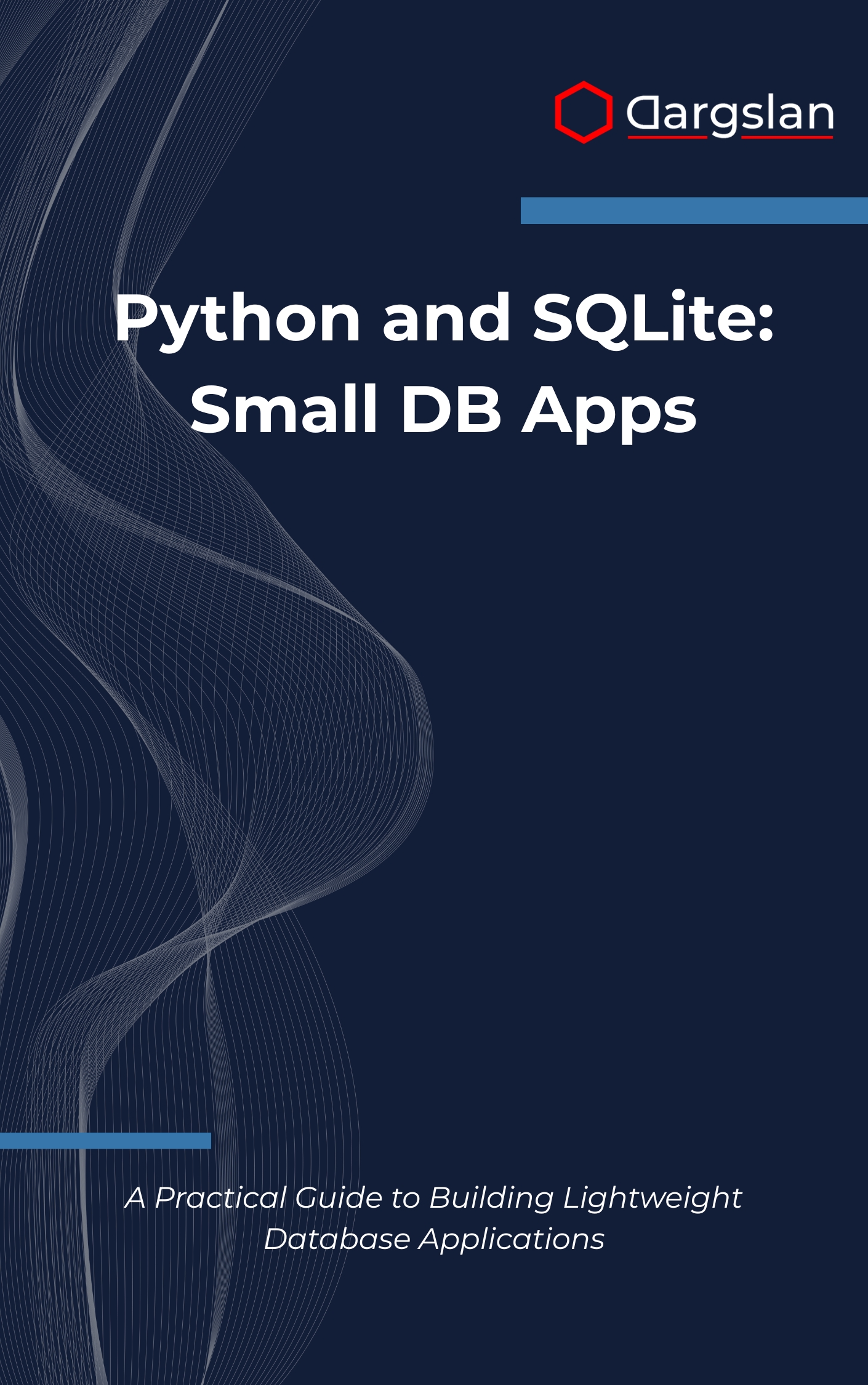Python and SQLite: Small DB Apps
Python and SQLite: Small DB Apps - A Practical Guide to Building Lightweight Database Applications,Build lightweight Python apps using SQLite for simple, efficient database management.

A Practical Guide to Building Lightweight Database Applications
Overview
Build fast, reliable, and portable data tools without the overhead of server installs. Python and SQLite: Small DB Apps shows how to pair Python’s simplicity with SQLite’s embedded power to create real, production-ready apps that are easy to deploy and maintain.
This IT book combines step-by-step instruction with complete examples, positioning itself as both a programming guide and a technical book you’ll reach for repeatedly. From SQLite database fundamentals and the Python sqlite3 module to database schema design and CRUD operations, you’ll master the essentials quickly and confidently.
As you progress, you’ll explore SQL query optimization, object-oriented database programming, and data validation techniques that make your code resilient. You’ll learn transaction management and context managers for safe, atomic writes, along with date and time handling for accurate, timezone-aware records.
The book goes beyond theory with command-line application development and GUI programming with Tkinter, helping you deliver polished tools with minimal dependencies. You’ll also implement database backup strategies, data export methods, application scaling considerations, error handling patterns, and database security practices—everything needed to ship dependable small DB apps.
Who This Book Is For
- Python developers who want to add durable, searchable data storage to scripts and utilities—learn how to model data, write clean SQL, and ship apps that just work.
- Engineers and analysts seeking a practical, end-to-end path from prototype to production—gain confidence with schema design, transactions, and robust error handling.
- Makers, educators, and indie hackers ready to build and ship lean desktop tools—use embedded databases to launch faster without managing servers.
Key Lessons and Takeaways
- Design reliable schemas and implement CRUD operations that scale from a single file to multi-user workflows, with clear patterns for indexes and constraints.
- Use the sqlite3 module effectively—employ context managers, parameterized queries, and transactions to keep data consistent and secure while improving performance.
- Ship complete applications: build CLI utilities and Tkinter GUIs, add data export methods and backup routines, and apply error handling patterns users can trust.
Why You’ll Love This Book
It’s practical from page one. Every concept is tied to a real task, from setting up a lightweight schema to writing a clean repository layer and handling edge cases with graceful fallbacks.
Clarity drives the teaching style. You’ll get focused explanations of SQLite features, concise Python examples, and step-by-step workflows for common jobs like migrations, data validation, and safe updates.
It’s a complete toolbox. Learn query tuning, script organization, and testing strategies alongside database security practices such as least-privilege access patterns and safe serialization.
How to Get the Most Out of It
- Start with the fundamentals to cement SQLite database fundamentals and the Python sqlite3 module, then move into database schema design, CRUD operations, and SQL query optimization before tackling advanced patterns.
- Apply as you read: mirror the examples in a small project, practice transaction management with context managers, and add data validation techniques to catch bad inputs early.
- Build mini-projects: a CLI note tracker with date and time handling, a Tkinter inventory app with object-oriented database programming, and a backup-and-export utility with CSV/JSON data export methods.
Deep-Dive Highlights
Master transactions with confidence. You’ll learn how to group related operations, recover from failures, and keep data consistent—essential skills when multiple actions must succeed as a unit.
Structure your code for maintainability. The book demonstrates repository classes, adapters, and service layers that separate SQL from business logic, making tests faster and upgrades safer.
Optimize where it counts. From choosing the right indexes to understanding query plans, you’ll see how small changes lead to big gains in performance—especially important for embedded apps.
Real-World Scenarios Covered
Build command-line application development workflows for importers, schedulers, and data transformation tasks that rely on SQLite’s single-file reliability. Learn how to rotate backups, compact databases, and safely migrate schemas without downtime.
Create polished desktop utilities with GUI programming with Tkinter—think personal finance trackers, inventory tools, or research notebooks—backed by a robust data layer. Add user-friendly error messages, logging, and retry logic using proven error handling patterns.
Plan ahead with application scaling considerations. You’ll understand when SQLite is ideal, when to optimize, and when to transition to a server database—ensuring you choose the right tool at every stage.
Security and Reliability Essentials
Adopt database security practices suited to embedded apps: input sanitization via parameterized queries, controlled file access, and safe backups. Handle date and time handling correctly to avoid logic errors and reporting mismatches across locales and timezones.
Protect your users’ data with robust validation, clear constraints, and defensive programming techniques that reduce runtime surprises. Implement backup strategies and restore drills so recovery is straightforward and documented.
Why This Approach Wins
Using an embedded engine minimizes deployment friction while maintaining professional standards of data integrity and performance. You can distribute a single-file database with your Python app and still enjoy transactions, indexes, and powerful SQL.
Whether you’re shipping internal tools or commercial utilities, the lightweight footprint lets you iterate quickly, automate tasks, and keep costs low—all while following best practices usually reserved for larger systems.
Get Your Copy
If you’re ready to accelerate your workflow and build dependable tools, this programming guide is your shortcut to mastering embedded databases with Python. Turn scripts into polished applications and deliver value faster.




